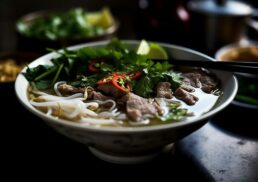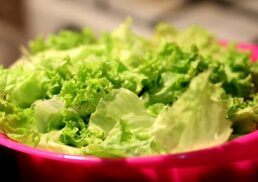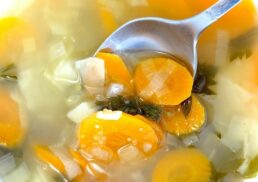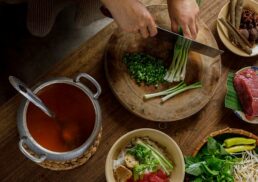Welcome to the world of rice pilaf, a versatile and flavorful side dish that is not only easy to make but also adored by people all around the globe! Let’s dive into the art of making rice pilaf, explore its essential ingredients, and discover how to customize it to suit your taste buds. Are you ready? Let’s begin!
Table of Contents
Key Takeaways
Discover the global culinary delight of Rice Pilaf, a flavorful side dish made with aromatic ingredients!
Elevate your meals with customizable and delicious rice pilaf dishes that pair perfectly with main courses.
Enjoy vegan & gluten free alternatives, plus other inspiring recipes to expand your horizons!
The Art of Rice Pilaf: A Flavorful Side Dish

Rice pilaf, both a method of cooking and a delicious result, is a textured, fluffy, and seasoned rice dish that can be easily made at home. With its key ingredients of rice, aromatics, broth or water, and seasonings, rice pilaf recipes can be found in various forms across different regions, including:
South Asia
Middle East
East Africa
Caribbean
This makes rice pilaf a truly global culinary delight.
The unique cooking method of rice pilaf, which involves sautéing, toasting, and simmering the rice, sets it apart from regular rice dishes. This process results in a delightful fluffy texture, where the rice does not clump or stick together, making each bite a joy to savor. Our easy homemade rice pilaf recipe is a classic dish that is both simple to make in one pot or skillet and bursting with flavor.
Variations of rice pilaf dishes are popular in different parts of the world. Examples include:
Pilau from the Indian subcontinent
Palaw in Afghan cuisine
Pulao from Persia
Plav in Central Asia
Pilav in Turkey
Some recipes even include warm spices, toasted nuts, and dried raisins for an extra layer of flavor and texture, like our mouthwatering Middle Eastern rice pilaf with peas and carrots.
Essential Ingredients for a Perfect Pilaf
The journey to creating the perfect rice pilaf begins with selecting the right ingredients. Essential components include the right type of rice, aromatics, spices, and your choice of liquid.
We’ll delve into the specifics of these ingredients and understand their unique contribution to the allure of your rice pilaf dish.
Choosing the Right Rice
Choosing the suitable rice for pilaf is of utmost importance because it lays the groundwork for the texture and flavor of the dish. Long-grain varieties, such as basmati or jasmine, are ideal choices for pilaf as they stay separate when cooked, giving you that light and fluffy texture that makes pilaf so delectable. In this context, long grain rice is the perfect option to achieve the desired result.
Basmati rice is known for its nutty flavor, while jasmine rice boasts a fragrant aroma and delicate taste. Both types of rice have a more pronounced flavor and aroma compared to standard white rice, enhancing the overall sensory experience of your rice pilaf. Brown rice, on the other hand, offers a different texture and nutritional profile.
Preventing your rice pilaf from becoming mushy starts with rinsing the rice before cooking, which eliminates excess starch that can lead to clumping. Once the rice is cooked, fluff with a fork to achieve the perfect texture, and you’ll have a delicious, fluffy rice pilaf that your taste buds will thank you for.
Aromatics and Spices
Aromatics and spices play a significant role in elevating the flavor of your rice pilaf. In most recipes, you’ll find a combination of:
cloves
cardamom
bay leaf
pepper
cinnamon
cumin
other tantalizing spices
These 5 stars spices add depth and complexity to the dish.
To properly sauté aromatics for rice pilaf, follow these steps:
Heat oil in a skillet and add onions and other ingredients like garlic.
Sauté them until they become fragrant and slightly softened.
Add the rice, continuing to cook for a few minutes until the rice grains are coated with the oil and aromatics.
This step is key, as it intensifies the flavor of the rice pilaf, making it even more tantalizing and irresistible.
In our easy rice pilaf recipe, we use a combination of mouthwatering spices like cinnamon, cardamom, and cumin to create a symphony of flavors in each bite. Feel free to experiment with other spices and aromatics to create your own unique rice pilaf masterpiece.
Broth vs. Water
The choice between broth and water can have a significant impact on the flavor of your rice pilaf. While water is a neutral option that allows the other ingredients to shine, using broth provides a richer, more complex taste.
Chicken broth, vegetable broth, and beef broth are all suitable options for rice pilaf. When you add chicken broth instead of water while cooking rice pilaf, it dramatically enhances the flavor of the dish, infusing it with a savory and rich taste that will leave you craving more.
When choosing between broth and water, consider the other ingredients in your recipe and the desired flavor profile of your finished dish. Either way, you’re sure to create a delicious rice pilaf that will impress your taste buds and your guests.
Step-by-Step Guide to Making Rice Pilaf

Armed with the knowledge of the essential ingredients and their roles in creating the perfect pilaf, we can now delve into a step-by-step guide to making rice pilaf. Following these steps will ensure a flavorful and fluffy dish that you’ll be proud to serve.
First, rinse the rice thoroughly to remove any excess starch, which helps prevent mushiness and clumping. Allow the rice to soak for 10 minutes before cooking, as this will help achieve a fluffy texture. Next, sauté your chosen aromatics, such as onions and garlic, in a skillet with oil until they become fragrant and slightly softened. Add the rice to the skillet and continue to cook for a few minutes, allowing the rice grains to be coated with the oil and aromatics. Alternatively, you can use a rice cooker to simplify the cooking process.
Lastly, to make a delicious rice pilaf, follow these steps:
Heat oil or butter in a skillet over medium heat.
Add diced onions and sauté until they become translucent.
Add your choice of rice and toast it for a few minutes, stirring occasionally.
Add your choice of broth or water to the skillet, along with your preferred spices.
Simmer the mixture until the rice is cooked to perfection. Adjust the liquid amount according to your rice type and any additional ingredients that may absorb the liquid, such as dried fruits.
Once your rice pilaf is cooked, fluff it with a fork and serve it as a fantastic side dish that complements a variety of main courses.
Customizing Your Rice Pilaf
Versatility ranks high among the exciting aspects of rice pilaf. With endless possibilities for customization, you can create a unique dish that caters to your taste preferences and dietary needs. By adding:
vegetables
nuts
dried fruits
proteins
With this easy-to-make rice pilaf, you can make rice pilaf that transforms your dish into a culinary masterpiece, leaving your taste buds singing.
For a delightful crunch, try adding slivered almonds or other nuts and seeds to your rice pilaf. If you’re looking to incorporate more vegetables into your meal, consider adding peas, carrots, or bell peppers for a burst of color and nutrition. And for a touch of sweetness, experiment with dried fruits like raisins, apricots, or cranberries.
Don’t be afraid to get creative with your rice pilaf, as the possibilities are truly endless. Whether you’re crafting a simple weeknight dinner or an elaborate feast for a special occasion, your customized rice pilaf is sure to impress and satisfy.
Serving Suggestions: Pairing Rice Pilaf with Main Dishes
Rice pilaf serves as an excellent side dish that harmonizes with a myriad of main courses. From grilled meats and kebabs to vegetable dishes, rice pilaf provides a flavorful and satisfying accompaniment that will elevate any meal.
Consider serving your rice pilaf alongside dishes such as lamb kabobs, baked chicken thighs, beef short ribs, or vegetable kabobs for a well-rounded and delicious meal. For a more global approach, explore regional dishes like Arabic Biryani, Persian Tahdig, or Spanish Paella that complement the flavors of your rice pilaf.
Pairing your rice pilaf with complementary main dishes results in a balanced and scrumptious meal that is bound to impress your friends and family.
Check out 11 Delicious Dishes To Serve With Rice Pilaf – FoodRevealer.
Storing and Reheating Leftover Rice Pilaf
Should you find leftover rice pilaf, there’s no cause for concern! Properly stored, rice pilaf can last up to 5 days in the fridge and 1 month in the freezer, making it a convenient option for meal planning. To store your rice pilaf, first, ensure it is cooled completely, then place it in an airtight container for refrigeration or freezing.
When it’s time to reheat your rice pilaf, simply microwave it with a bit of water to prevent dryness. If your rice pilaf seems too mushy, try reheating it in the oven at 350 degrees for about five minutes to dry it out and restore its fluffy texture.
Appropriate storage and reheating of your leftover rice pilaf lets you relish its delightful flavors and textures all week, offering a convenient and tasty solution for hectic schedules.
Troubleshooting Common Rice Pilaf Issues
Like any dish, rice pilaf might sometimes face problems like mushiness or inconsistent cooking. However, these common problems can be easily addressed by adjusting your cooking techniques and following the proper rice preparation steps.
To prevent mushiness, start by rinsing and soaking your rice before cooking. Ensure that you’re using the correct rice-to-liquid ratio and adjust it according to your chosen rice type and additional ingredients. If your rice pilaf turns out mushy despite following these steps, try reheating it in the oven to dry it out and restore its ideal texture.
Uneven cooking can often be remedied by stirring the rice pilaf gently during the cooking process and ensuring that your heat is evenly distributed. By following these tips and troubleshooting solutions, you can create a perfect rice pilaf that is both delicious and satisfying.
Vegan and Gluten-Free Alternatives
Simple ingredient substitutions can easily adapt rice pilaf to cater to vegan and gluten-free diets. Here are some substitutions to consider:
Use olive oil instead of butter to make a vegan rice pilaf.
Use vegetable stock instead of chicken stock.
To make your rice pilaf gluten-free, substitute orzo pasta with gluten-free orzo or rice and reduce the stock by 1/4 cup.
With these alternatives, everyone can enjoy the delicious flavors and textures of rice pilaf, regardless of dietary restrictions. By making these simple adjustments, you can create a delightful rice pilaf that caters to the needs and preferences of all your guests.
Other Delicious Rice Dish Inspirations
For fans of rice dishes seeking more inspiration, a plethora of delicious options awaits exploration. From Asian cuisine to Middle Eastern delights, a wide range of flavors and textures await your culinary curiosity. This post may contain affiliate links, but rest assured, our recommendations are based on our genuine love for these dishes. Please note that this post may contain affiliate partnerships, which means we may receive a commission if you make a purchase through our links.
Consider trying dishes like Omurice, Karē raisu, Kayu, Oyakodon, Tendon, Injeolmi, Tamago kake gohan, Bánh bèo, Chazuke, Saba zushi, Chinese fried rice, Chinese sausage fried rice, Nasi katok, and Asian steak bites with rice from various Asian cuisines. Or venture into traditional Middle Eastern rice dishes like Arabic Biryani, Kabsah, Tahdig, Machboos, and Koshari.
By exploring these unique rice dishes from different regions, you’ll expand your culinary horizons and discover new ways to enjoy the versatile and delicious world of rice.
Summary
In conclusion, rice pilaf is a versatile and flavorful side dish that can be easily customized to suit various tastes and dietary needs. By following our step-by-step guide and experimenting with different ingredients, you can create a delicious and satisfying rice pilaf that will impress your friends and family. We hope this blog post has inspired you to try our easy rice pilaf recipe and perhaps explore other delightful rice dishes from around the world. Happy cooking!
Frequently Asked Questions
What type of rice is best for rice pilaf?
For the perfect fluffy texture, use long-grain varieties like basmati or jasmine rice to make your rice pilaf – you won’t be disappointed!
Can I use different spices in my rice pilaf?
Yes! Get creative and try out different spices to make your own delicious rice pilaf. Try adding saffron, cumin, or turmeric for a unique flavor. Or, if
How do I store and reheat leftover rice pilaf?
Cool your leftovers quickly, store them in an airtight container, and add a bit of water when reheating for a delicious rice pilaf!
Can I add vegetables or proteins to my rice pilaf?
Yes! You can add a variety of vegetables, nuts, dried fruits, or proteins to your rice pilaf to make it even more delicious!
Can I make rice pilaf vegan and gluten-free?
Yes, absolutely! Simply swap out butter for olive oil, vegetable stock instead of chicken stock, and select a gluten-free pasta or rice to create a vegan and gluten-free rice pilaf. This will make a delicious and healthy meal that everyone can enjoy.









